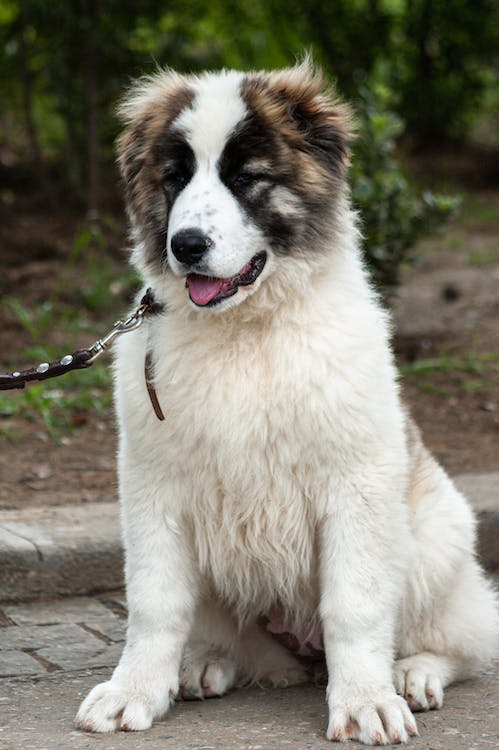Hailing from Southeastern Europe, the Tornjak is a ferocious guardian that would protect the people or flock entrusted to him. He will not be swayed and is always vigilant of strangers or predators. A devoted canine, he will do everything to guard the property when the situation calls for it. Inside the home, he has an unshakeable disposition, courageous, confident, and intelligent, yet very loving, obedient, and peaceful towards his close family.
Origins of the Tornjak
The Tornjak is one of the truest ancient breeds, descending from the native, primitive shepherd dogs from over a millennium ago. The original stock used for recreating the breed came from Bosnia and Herzegovina and Croatia’s mountainous areas and are likely to have been used to guard people, sheep, and other livestock on their territory.
As nomadic shepherding declined as new breeds were incorporated in the farming, the Tornjak’s popularity plummeted, almost bringing them to extinction in their homeland. Fortunately, zoologists founded a systematic research program about the Tornjak’s antiquity, and purebred breeding started in 1978.
Today, the United Kennel Club classifies the Tornjak as a guardian dog. The breed hasn’t received full recognition from the American Kennel Club, but it is accepted in their Foundation Stock Service since 2012. Continuous efforts are pushing the Tornjaks to be utilized as shepherd dogs, the purpose they were initially bred for, and local groups continue to donate them to local farmers to guard their livestock against large predators.
Characteristics of the Tornjak
Height: 23-28 inches
Weight: 62-110 pounds
Life Expectancy: 12-14 years
Hypoallergenic: No
The Tornjak is a large-sized and well-muscled dog. He is well-proportioned, with a broad and deep chest and strong neck, boasting a build befitting his original purpose as a sheepdog. He has dark brown, almond-shaped eyes and a large, black nose with wide nostrils. As for his double coat, the topcoat is straight, long, and harsh, while the undercoat is dense, wooly, and softer to touch. While some Tornjaks may sport a black mantle, he is mostly white with colored markings, commonly in a combination of black and white, brown and white, and red and white.
With his immense size and power that can keep away aggressive predators, such as bears and wolves, it is easy to think that the Tornjak is as fierce inside the home. However, he proves otherwise as he is a peaceful, affectionate dog towards his family and will not show any sign of aggression or nervousness.
He is a very emotional dog that thrives in human companionship and builds strong bonds with its owners. He hates being alone and might feel down if for an extended period without any interaction.
While he is not generally aggressive, the Tornjak loves his family so much that he’ll try to defend them if he senses any threat coming towards his beloved humans. Brimming with bravery and strength, he is not the type of dog that would step back in such a situation.
As such, he does not trust guests easily and will bark at any stranger coming onto the property, making both an excellent guard dog and watchdog. A proper introduction is needed whenever visitors arrive at home. He can be more accepting and pleasant to those who visit the house often.
Given his intelligence and people-pleasing personality, the Tornjak is easy to train. He can pick up command quickly. However, he has a sharp memory and will remember any form of mistreatment. Instead, he will flourish with positive reinforcement and rewards.
In general, the Tornjak is a loyal dog with a strong desire to be close with and protect his family. He is not swiftly lured away from his job and will stand to combat any danger. Just make sure to invest time for him, and he will return the attention and affection tenfold.
A female Tornjak participating in a dog show in Hungary
Caring for the Tornjak
The Tornjak’s long, dense coat sheds averagely. He needs to be brushed at least two to three times a week using a metal comb or pin brush to avoid matting and tangling. Plus, he also has seasonal blowouts, which will require more grooming when shedding becomes heavier. A deshedder may be handy using intense shedding, but bathing him first usually is recommended to loosen the hairs that need to be shed out.
Other parts of his grooming upkeeps are primary care. Trim his nails every few weeks. You may seek help from a vet or a professional groomer, but you may do it yourself with the education, practice, and the right tools. Brush his teeth regularly using vet-approved toothpaste and a dog toothbrush. Then, check his ears occasionally and wipe them clean to avoid any infection.
In terms of his exercise needs, the Tornjak is not overly active. However, being a large breed, he relishes going outdoors and still needs daily walks and play sessions daily to keep him fit. Ensure that he is leash-trained at an early age before he discovers how to use his strength. You would never want him to pull you away, given his strength. And with his power and size, he will not do well in apartment living. Having a well-fenced yard provides him the space that he needs to thrive.
Heralded as a healthy dog, the Tornjak doesn’t face many health challenges compared to other breeds. Just make sure to avoid strenuous exercise during his first six months of age to help prevent hip dysplasia and joint problems. Consulting your veterinarian regularly will help you gain education and develop a care plan that fits your dog’s needs so you can keep him as your longtime pet.

